- Home
- Michael White
Travels in Vermeer Page 2
Travels in Vermeer Read online
Page 2
Hours later, out of the wrong direction, I arrive on the waterfront, where I’d marked an X for the Renaissance Hotel on my map. It’s a modern high-rise, earthen and mahogany tones inside. My room is on the fourth floor. I swing open the French windows to a canal view of gray sky, lead-gray water. Only eight o’clock, but I’m truly done—and lonelier than I’ve felt in years.
What am I doing here? I slump in the chair for half an hour without moving. In the bathroom, I line up pill bottles and inhalers on the sink—my Advair, Wellbutrin, Lexapro, Aleve—then sleep in my clothes until sunrise.
2. Daydreaming
There’s a story I sometimes tell my college students about how I was placed in “slow” classes in grade school, a designation that lasted through high school. The reason, I think, was because I was extraordinarily shy and inward, and always traveling in my mind. I can conjure up my experience in a single scene. I remember an open window beside me, with a view across the emerald football field, its white chalked lines and wooden bleachers, and beyond that, nothing but rolling hills. I’d stare and stare, in a trance-like state, as the teacher’s voice washed unintelligibly over me—as soothing as ocean waves, I might say now, though I never saw the ocean in my childhood. If I retained nothing from Basic Math or Wood Shop, at least I became a world-class dreamer.
The only event that had much impact on the reveries of my youth was the rather violent break-up of my family when I was thirteen. There were five children: three boys, then two girls. I was the second. For many months (it seemed forever), leading up to the split, there’d been nightly screams and threats and shattered plates and smashed furniture. Upstairs, in my bed, I tried covering my ears with my pillow. This break-up didn’t disturb my inwardness so much as drive me deeper and more sullenly within myself. I even began using my alleged “slowness” as a crutch, an excuse for the daydreaming that was my principal survival mechanism.
At that time, my father, a biochemist, accepted a yearlong visiting position at the University of North Carolina at Chapel Hill. There were rumors of another woman. At the end of the year, when he finally showed up one day unannounced at our house, my mother attacked him with his own golf clubs, shattering most of the glass in his car before he managed to back out of the driveway.
After the divorce and after my father had returned to Missouri, my mother tried several times to force him to take me. What she said was that she couldn’t afford to feed five children on a music teacher’s salary. What I heard was that she didn’t want me. He didn’t want me, either. And I didn’t want to go with him. Several times that year, my mother made me ask him. She’d dial his number, then hand over the heavy black receiver. He always said: Tell her no.
One Friday afternoon, in April, my mother suggested we go for a drive. I had just turned thirteen, so I presumed the outing had something to do with my birthday. But when we approached her red VW convertible, I saw, with a sinking feeling, that my thin twin mattress was stuck implausibly in the back of it.
“Wait, why is my mattress in the car?” I asked.
“Don’t worry,” she said, “we’re getting you a new one.” Okay, I thought. We rode for a mile or two, through newer and newer suburbs, she with an odd smile frozen on her face.
“Look at that beautiful lake,” she said, as if I’d never seen Fairview Lake before.
Finally, she pulled into a strange apartment complex with a small parking lot. “Get out and help me with this mattress,” she said. We unloaded it at the edge of the lot. “Better drag it over there onto the grass,” she said.
While I was doing that, I glanced up just in time to see her duck back into the car.
“No,” I pleaded. “Don’t.”
I stood behind the car to block her from backing out. She shifted into first gear, and drove forward over the curb. I remember how she glanced back once, with that same paralyzed smile, then jounced downhill across the lawn, and back to the street again.
This was the first time I’d seen where my father lived, in a modest brick four-plex. I sat on the curb, completely desolate, and waited a couple of hours for him to return home from his lab on the University of Missouri campus. He always worked late, six days a week.
Finally, at six p.m., he pulled into the parking lot, walked past me wordlessly, unlocked the back door of his ground-floor apartment, and disappeared inside. I waited another minute before I followed him.
He didn’t kick me out; he knew he couldn’t.
Back when the family was still together, my father kept a heavy, pigskin razor strop hanging on its own nail in the kitchen. Spankings were carried out with a grim sense of ceremony; the other children had to stand and watch. Probably this wasn’t too unusual in those days, nor was it what made me resist living with him after the divorce. What I resisted was his silence. He simply didn’t converse with his children. In the next few years I spent with him, he’d come home late, fix a martini, and that was pretty much it.
My father had many fine qualities: a relentless imagination and a stunning array of interests, from progressive politics to gardening to classical music to avant-garde film. I could say much the same of my mother, a classical violist and lifelong music teacher. But neither had much aptitude for parenting.
That’s why I enlisted. It turned out there were two and only two aspects of the Navy that suited me: drinking and traveling. Because I continued to drink like a sailor after my discharge, I ended up in recovery a few years later. That was almost twenty-five years ago. I’ve yet to find a reason to stop traveling.
3. Why, Why
The next morning, I drop in at a MacBike location a block from my hotel, rent a big, black clunker, and head off for the Rijksmuseum. In the Philips Wing, an exhibition of seventeenth-century paintings, “The Masterpieces,” is on temporary display. The rest of the museum is undergoing its long-anticipated renovation, or reincarnation. The show is a best-hits narrative, culminating in Rembrandt’s colossal Night Watch, always the crown jewel here. In seventeen rooms, the show sketches the explosion of secular art: portrait, still life, seascape, genre scene. The twenty Rembrandts, including the great The Jewish Bride, are arrayed in the two galleries toward the end. The latter is a picture of a somewhat older couple (perhaps Isaac and Rebecca), clasping each other solemnly. It’s as arresting for its splendid golden textures and hallowed light, as for its subject; it makes me realize how rare it is to see such a sincere celebration, without a tinge of irony, of older adults in love.
Along the way, there are a couple of smaller rooms devoted to groups of paintings by Jan Steen and Johannes Vermeer. Because there are so many Rembrandts to see, I decide to give the Vermeer room only a minute or two. I stop and gaze down the length of the space; three works by the Delft master hang on the far wall. (A fourth appears with related genre works—busy group scenes—on the right-hand wall.) The Vermeers are unexpectedly small, but the force of the spell they cast is so eerily powerful that it’s difficult to move, to breathe.
So I stop, I look around. The walls are cream-colored floral damask; the floor is parquet, with a centered, rectangular, slate blue rug. Behind me: Gabriel Metsu’s frankly disturbing yet sympathetic The Sick Child. I take a step or two toward the small Vermeer on the wall to my right: it’s called The Love Letter. Revealed through a dark doorway is a complicated scene. A well-dressed lady, holding a lute (I think), receives, over her shoulder, the eponymous letter from her maid. The room they are in is opulent, filled with bourgeois clutter (a laundry basket, a broom, a crumpled sheet of music). There’s a sense of withheld meaning in this painting—withheld from me— and it doesn’t attract me.
I move ahead to the Vermeers on the far wall. The Milkmaid is in the center. On the left is a cityscape, The Little Street. On the right is the pensive Woman in Blue Reading a Letter. But it is The Milkmaid that stuns from a distance, drawing my eyes magnetically to the lowered eyes of the woman, her shadow incised against the luminous whitewash. I feel a shiver all the way up and down my spine.<
br />
She stands before a still life of bread crusts and basket, pouring a steady trickle of milk from an earthenware pitcher into a bowl—a slip of motion at the heart of so much stillness. Her form is startling, hyper-real: the vivid lemon-yellow tunic balanced against the lapis lazuli depths of her skirts. Likewise, the tight weave of the wicker basket; cool, crisp, linen bonnet; nubby tunic. Stillness. Not emptiness but stillness, a great soul balanced there.
I’m drawn to her broad and ruddy brow—built up laboriously of heavy, individual strokes of impasto that remain unmixed—but also to the wall behind her. It is a coarse, workaday wall, befitting the painting’s subject and memorable for its grittiness, its lovingly pockmarked patina. Above and to the left of the maid’s face are trompe-l’oeil nails with nail-heads and, most startlingly, the shadows of the nails, fixed in the plaster. The light falls from the left onto the maid’s chest, bordering her right side in deep shade. By dramatically brightening the wall to her right, which, in a more realistic painting, would be in shadow, Vermeer defines her by contrast. A thin, white line, outlining her right side and sculpting her almost into relief, heightens this effect. The calculation, the trickery is nearly invisible; the image ravishes. After a few minutes, I move left, sidestepping the steady throng The Milkmaid attracts.
The Little Street is also a hymn to the domestic, a representative view of Delft—a long, slow, cloud-banked afternoon, such as Vermeer must have seen, at any given moment, through his studio window. A couple of women, glimpsed through open doorways, go about their chores; two children crouch beneath a bench outside, utterly absorbed in some game of their own. Between the roofs of the two main houses, at the front of the painting, is a V of skyline, with grayish, thinly painted chimneys receding into the scumbled distance. A few tendrils of ivy cling to the front of the cottage at left, convincing, yet of a weird, almost neon-blue. (I’ll discover later that this is a fairly common occurrence in Dutch painting; the loss of the surface yellow glaze turns the natural ultramarine green to blue.)
Some details, like the thicket of chimneys, are quick strokes on the canvas. Others are exquisitely realistic, like the watery striations in the cobbles, the whitewashed brick around each doorway. I love how the whitewash extends only as high as a man could conveniently reach, and the way the shutters on the right-hand house grow more sun-faded as the eye moves from the first to the third floor. Tributaries of cracks in the fascia angle down the grain of the brickwork, roughly patched with mortar. There’s something deeply familiar, deeply felt, about this vision of the taken-for-granted, wear-and-tear of time. On the one hand, there’s a light touch that makes more recent eras of realism plod by comparison. On the other, the faithfulness of the eye and the brush makes the blurry effects of Impressionism seem a little callow. It is a style as much unconscious as conscious—and blessedly free of sentiment—as if a caul had suddenly lifted, allowing the eye to meet the world.
With some effort, I pull away, and skirt around to the right of The Milkmaid, to Woman in Blue Reading a Letter. It is a later work (c. 1662–1665), though not as late as The Love Letter (c. 1667–1670). The differences between Woman in Blue Reading a Letter and the two earlier works are unsettling. The softly shadowed side of the woman’s face is indistinguishable in color from the shadowy contour map that undulates directly behind her; it is of Holland, though I’d only discover this later, in art books. The vision is all softness, tones of sepia and cerulean. In certain passages, like the front and sleeve of the ultramarine blouse, highlights are laved in gold. Along the plaster wall, which glows pale-gold, shadows are tinted blue.
Unlike the gritty backdrop for the woman in The Milkmaid— which is as luminous and detailed as possible—there is no sense of perspective supporting this carefully coifed but solitary blue letter-reader. She floats in the currents of her own space, with nothing to fix her among the nebulous hues of the plaster, the umber terra incognita of the map. What we see of her form—her neck, her forearms—is elegantly pale and long, though her body seems to swell at the waist; whether this is due to a pregnancy, or to the belled style of the dress, I can’t decide.
I remember Elizabeth Bishop’s poem “The Moose,” which describes a memory of a childhood voyage, a night-time bus trip. The bus stops because a “grand, otherworldly” moose has appeared in the middle of the moonlit road. Then, taking its time, the moose inspects the bus, and the speaker whispers:
Why, why do we feel
(we all feel) this sweet
sensation of joy?
Why do I feel this sweet sensation of joy? I look from one painting to the next: the little street, the milkmaid, and the letter reader. For the moment, I am this tingling at the back of my scalp.
4. The Flash
I walk ahead through late, dark Rembrandt, and then loop back to Vermeer again. I browse through elegant De Hooch—his open doorways, merry companies—then return to Vermeer again. Finally, I move on to the heavily guarded, sea-green room that houses Rembrandt’s masterpiece commonly known as The Night Watch (actually titled The Company of Frans Banning Cocq and Willem van Ruytenburch). Its size and splendor is a shock. Fourteen feet wide, it seethes with national pride. The captain and his lieutenant are lit at the center with dramatic chiaroscuro, as is a little girl, part mascot, part guardian angel. Behind and around the three, an entire militia prepares for a peacetime parade, though for all the Baroque bravado of musket and lance, they might as well be readying to die for the common good. Here I stop.
I’ve seen enough, the exit beckons, but something has happened. Instead of leaving, I turn and float lightheaded against the press of the crowd, back through the galleries to the Vermeer room again.
Then I stand before the sunlit street, the milkmaid, and the letter reader. I’m thinking now with my eyes, my skin, I’m drifting sidelong into dream—the paintings meet me there. I feel the trickle of memory in the street’s gutter. There is the doe-faced maid at the center of it all, ministering forever. There is the cloud-blue reader, dissolving in the raptness of her attention.
I’m standing well back in the center of the room. People move quietly toward the paintings. Each person whispers, in German or Japanese; some say nothing at all.
Suddenly, I understand: Vermeer’s hushed clarity addresses me, is for me as I stand here now. What I’ve been going through, what I’ve tried to deal with in my divorce, is total loss. I thought I knew about all that when my first wife, Jackie, died of cancer—but this time, I ’d lost faith. It isn’t just that I don’t believe in love; I’m not sure I believe in anything. But, looking at these radiant canvases— unreachable yet familiar—reminds me. The rapturous inner life of each woman and the infinitesimally detailed and self-contained life of the street are each imagined as an undiscovered heaven on earth. It’s as if these visions are here to startle me to my senses by showing me recovered images from a former life.
Now I leave and retrace my steps through the rooms. On the white marble stairway, I reach for the sharp-edged, stainless-steel handrail. A shape flits before me, inside me, in my mind—an abstract shape like a helix, like the arc of a swallow’s flight. I reach the landing, and turn.
All this takes place in a moment: one prolonged flash.
When I was ten or eleven, on a cold gray autumn day, my older brother Dan took me outside and unwrapped a foot-long ribbon of magnesium. (Because my father tended to bring his work home with him, our house back then was a wonderland of beakers and Bunsen burners, microscopes, pipettes, and other paraphernalia.) He let me hold it, weightless and malleable in my hands. Then he solemnly went through a vaguely scientific process of sparking a propane torch, fine-tuning its flame—as Dad had taught him— and lighting the coiled magnesium on our gravel drive. It burned spookily, with a godlike, white-blue flame that Dan said we were not supposed to look at. When he threw a cup of water on it, it sputtered noxiously, then leapt up violently, so we flinched and scattered. Soon, though, it petered out, and we were left to marvel at its spiral sp
ine of ash.
The eerie, inexplicable intensity I feel when looking at Vermeer’s paintings is like that—that different kind of fire. A certain chain of events has left me open, on a startlingly deep level, to Vermeer’s gaze, to his meditation on our place on earth.
There are only thirty-five Vermeers in the world. How many cities house groups of them? Not more than a handful, I’m pretty sure. I could see most of the oeuvre in a matter of months. I’ll use every break from school, travel from city to city, museum to museum. And because of the light that Amsterdam and the Rijksmuseum has shed on Vermeer, this visit will be the model for the rest.
5. Itinerary
Outside, sitting on a black metal bench with a Vermeer catalog, my Marble notebook and Uniball pen in hand, I come up with an itinerary. It starts here in Amsterdam, and will take a little more than a year.
AMSTERDAM
(Rijksmuseum)
The Little Street (c. 1657–1661)
The Milkmaid (c. 1658–1661)
Woman in Blue Reading a Letter (c. 1662–1665)
The Love Letter (c. 1667–1670)
THE HAGUE
(Mauritshuis)
The Girl with a Pearl Earring (c. 1665–67)
View of Delft (c. 1660–61)
Diana and Her Companions (c. 1653–56)
WASHINGTON, D.C.
(The National Gallery)
Girl with a Red Hat (c. 1665–1667)
Girl Holding a Flute (c. 1664–1665)
Woman Holding a Balance (c. 1662–1665)
A Lady Writing (c. 1665–1666)
NEW YORK
(The Frick Collection)
Officer and Laughing Girl (c. 1655–1660)
Girl Interrupted in Her Music (c. 1656–1661)
Mistress and Maid (c. 1666–1667)

 Paul McCartney's Coat
Paul McCartney's Coat The Cat Is Back!
The Cat Is Back!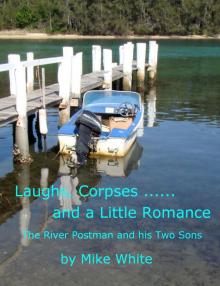 Laughs, Corpses... and a Little Romance
Laughs, Corpses... and a Little Romance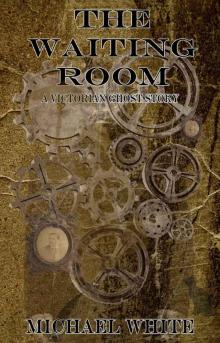 The Waiting Room
The Waiting Room Into the Light- Lost in Translation
Into the Light- Lost in Translation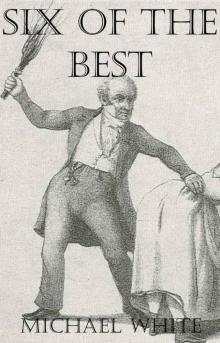 Six of the Best
Six of the Best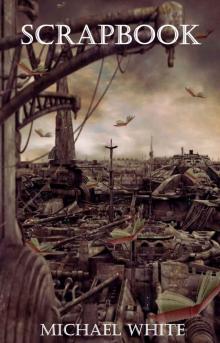 Scrapbook
Scrapbook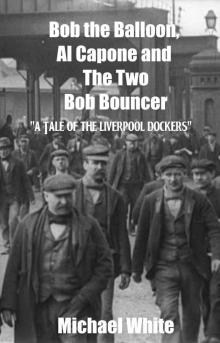 Bob the Balloon, Al Capone and the Two Bob Bouncer
Bob the Balloon, Al Capone and the Two Bob Bouncer The King of the Cogs
The King of the Cogs A Bad Case of Sigbins
A Bad Case of Sigbins To the Lighthouse
To the Lighthouse Overboard!
Overboard!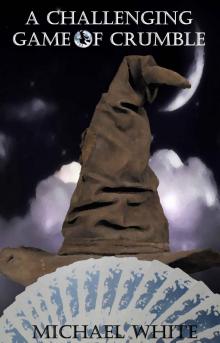 A Challenging Game of Crumble
A Challenging Game of Crumble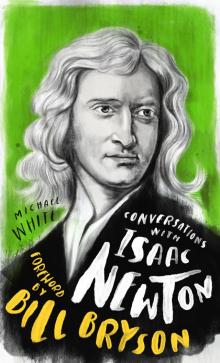 Conversations With Isaac Newton
Conversations With Isaac Newton The Complete Adventures of Victoria Neaves & Romney
The Complete Adventures of Victoria Neaves & Romney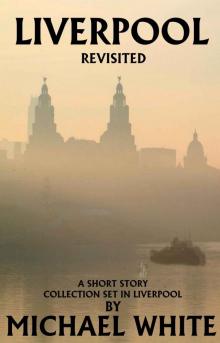 Liverpool Revisited
Liverpool Revisited Dad Comes to Visit
Dad Comes to Visit Lachmi Bai, Rani of Jhansi: The Jeanne D'Arc of India
Lachmi Bai, Rani of Jhansi: The Jeanne D'Arc of India Barf the Barbarian in Red Nail (The Chronicles of Barf the Barbarian Book 2)
Barf the Barbarian in Red Nail (The Chronicles of Barf the Barbarian Book 2) Equinox
Equinox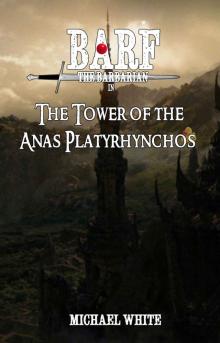 Barf the Barbarian in The Tower of the Anas Platyrhynchos (The Chronicles of Barf the Barbarian Book 1)
Barf the Barbarian in The Tower of the Anas Platyrhynchos (The Chronicles of Barf the Barbarian Book 1)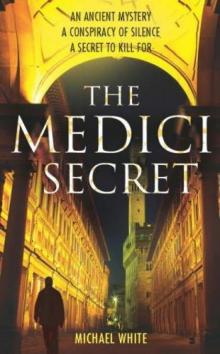 The Medici secret
The Medici secret Jack Pendragon - 02 - Borgia Ring
Jack Pendragon - 02 - Borgia Ring The Art of Murder jp-3
The Art of Murder jp-3 Travels in Vermeer
Travels in Vermeer